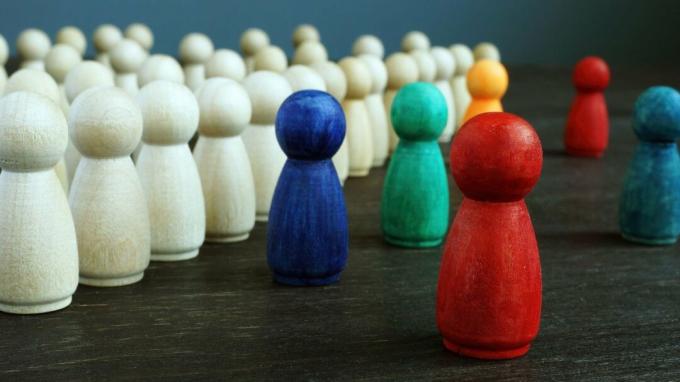Gender Apartheid: what is it and how does it manifest itself?
Systematically, some structures in the world perpetuate gender inequalities, giving more value to everything related to men and the masculine and undervaluing, attacking or taking away the rights of women women. Discrimination, segregation and inequality of opportunities based on gender limit full development and the equal participation of both genders in society; in addition to violating human rights.
Some researchers have spoken of gender apartheid, evoking the infamous racial segregation of South Africa between 1948 and 1992. In this context, it refers to the systematic construction of specific gender roles for men and women, generating an irregular and gender-biased distribution of opportunities, rights and expectations. Phyllis Chesler, a feminist writer and psychologist, has been one of the most influential voices denouncing this reality and investigating it.
Throughout this article, we are going to better understand what gender apartheid is and how it has prevailed throughout history. We will also explore Phyllis Chesler's insights and contributions on the subject.
It is vital to understand the scope and complexity of this issue in order to move towards a society that respects and celebrates gender diversity., providing equal opportunities and rights for all people regardless of their gender.- We recommend you read: "Suffering discrimination increases the risk of death in overweight people"
Historical context of gender apartheid
To begin to fully understand what gender apartheid refers to, it is important to know the historical origins of both the term and the activist and research movement generated from it he.
The term gender apartheid, as previously mentioned, is linked to racial apartheid in South Africa.. This established a system based on white supremacy, segregating people of race into specific spaces and prohibiting access to spaces that do not correspond to the personal racial group.
In addition, voting power was given to white people and marriage and sexual relations between black and white people were prohibited. This arose as a way to maintain power among the white people of the country, it is important to note that they were the population minority, representing only 21% of the population.
Gender apartheid is linked to racial apartheid to explain how a systematic construction can end up isolating women in relation to men, having had many more rights, freedoms and facilities throughout history and still seeing this reflected in our day to day. Sometimes it is easy to think that "things are not so bad" or that "now there is more equality"; but the reality is that gender discrimination continues to exist and society in general has been built on macho and patriarchal bases.
Understanding the roots of gender apartheid, researchers have come to trace back to ancient patriarchal societies, in which there were rigid and hierarchical gender roles, with women being relegated to domestic and care roles, and men to power and leadership public. These divisions gave rise to the systematic discrimination of which we have been speaking and on which the planet has developed.
Feminist struggles against that arose during the 19th and early 20th centuries, organizing and fighting for suffrage, the right to work, and equal opportunity.. It is in the middle of the 20th century and, with the rise of the second wave of feminism, when the awareness of patriarchal power structures and subtle and explicit forms of discrimination against gender. Here the term gender apartheid begins to be used to emphasize the similarity with the South African segregationist system.
From this point on, the term has become entrenched in feminist discourse and has been used to describe various forms of gender discrimination in different societies and cultures. Gender apartheid continues to manifest itself in areas such as equal access to education and health care, wage gap, gender violence and the lack of representation of women in positions of power and decision-making.

How does gender apartheid manifest itself in society?
In the previous section, we have already commented on some representations of the influence of gender apartheid on the daily life of our societies and its different consequences. Let's discuss them in more detail:
1. Wage gap
The wage gap is one of the most well-known and persistent inequalities in society, and refers to the fact that women, globally, they earn less money than their male counterparts doing similar jobs and having the same training and experience. This inequality limits the financial autonomy of women and perpetuates the cycle of economic dependency.
2. Political participation and leadership
Although it seems that in recent years there has been progress in terms of women's political representation, female participation in leadership positions is still insufficient. Cultural and social barriers, as well as a lack of opportunities and support, contribute to the underrepresentation of women in political decision-making and in leadership roles in different areas more closely linked to the business world and executive.
3. gender violence
Gender-based violence is one of the most extreme forms of gender apartheid and use of power against women, disproportionately affecting women and girls. Domestic violence, sexual harassment, human trafficking for sexual exploitation and other forms of gender-based violence perpetuate oppression and control over women.
4. Education and access to opportunities
In many parts of the world and due to structural patriarchal construction, girls and women face obstacles in accessing quality education. This lack of access to education limits their opportunities for personal and professional development, perpetuating their social segregation.
5. Stereotypical gender roles
The maintenance of traditional and stereotyped gender roles impose rigid expectations about how they should behave and aspire to be men and women, limiting their realities and behaviors to ideologies constructed and representative of the patriarchy. These influence the choice of careers, the distribution of domestic responsibilities and the perception of abilities of each gender..
6. Maternity and unpaid care
Many women face a double burden of dealing with the responsibility of paid work alongside unpaid care work at home. This distribution of work limits career opportunities and can affect your physical and emotional well-being.

Phyllis Chesler and her contributions
Phyllis Chesler is an American feminist writer and psychologist who is considered one of the most influential voices denouncing gender apartheid and promoting gender equality.. Throughout her career, she has courageously and insightfully addressed various issues related to gender discrimination. Her perspective understands gender oppression as a universal phenomenon, present in all cultures and social systems.
One of Chesler's main contributions is the critical analysis of the patriarchal structures responsible for gender apartheid. She argues that these structures undermine women's autonomy and restrict their opportunities, perpetuating inequality rooted in cultural beliefs and gender stereotypes. Through her work, she has challenged the notion that gender discrimination is exclusive to certain cultures or geographies, emphasizing that it is a systematic and global problem that requires answers collective.
She has also addressed the complexity of power relations and gender dynamics in the family and in society in general. Her work on the psychology of patriarchy and the way certain norms and values are internalized and perpetuated has been essential to understanding how these inequalities are forged and maintained.. It highlights the importance of challenging these norms and empowering women to reclaim their autonomy and break with oppressive structures.
From her intersectional feminism, Chesler defends that the experiences of discrimination vary according to the contexts socioeconomic, ethnic, racial, and cultural backgrounds, but emphasizes that all women share a common experience of oppression based on gender. It is essential that they support and collaborate to reach significant changes.
conclusions
The concept of gender apartheid reveals a complex and persistent reality in contemporary society. Through discrimination, segregation and the perpetuation of gender roles, gender apartheid limits the full development and equal participation of men and women in different spheres of life in society.
It is important to keep in mind that each of us has a role in the fight against gender apartheid.. We can promote equality in our personal relationships, support initiatives and policies that promote gender equality and challenge the stereotypes and prejudices that perpetuate the discrimination. By following the example of Phyllis Chesler and joining our voices, we can help create a future where gender equality is a tangible reality for all.
